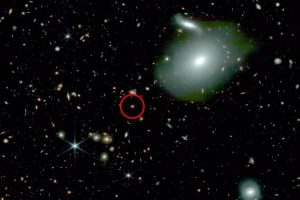Scientists have completed an experiment that was raised in the hope of finding a definitive answer to the question of whether the entire organism ages at the same rate.
The international team, in which the Doñana Biological Station (EBD) of the Higher Council for Scientific Research (CSIC) in Spain participates, has discovered that the process followed by telomeres (markers of aging that tend to shorten with age and stress) occurs unevenly in different parts of the body. The results suggest that not all the organism ages at the same speed.
To reach this discovery, the researchers carried out a seven-month experiment with individuals of a species of frog (Xenopus laevis) that undergoes metamorphosis and measured the length in five different tissues (tail muscle, heart, liver, intestine and leg muscle) during their larval phase, metamorphosis, and after metamorphosis, until they reached the adult phase.
“This finding is highly relevant because it suggests that the transformations that tissues undergo throughout life imply different aging dynamics. For example, in the case of the intestine, after metamorphosis we observe longer telomeres than before metamorphosis. In the species studied, the intestine undergoes incredible transformations during metamorphosis (from vegetarian to carnivore) and the observed changes in telomere length seem to be mediated by the existence of a large number of stem cells in the intestine after metamorphosis,” he says. Pablo Burraco, researcher at the EBD and co-author of the study.
“Other tissues, such as the heart, undergo few changes once formed in early stages, which could explain the absence of changes in the length of their telomeres throughout life, added to possible mechanisms protecting their aging,” adds the scientist.
The new study suggests that not all the organism ages at the same rate. (Illustration: Amazings/NCYT)
The aging of organisms is due to the loss of functionality of some of the organs of the body. This process involves everything from cardiovascular diseases to nutritional imbalances or the development of cancers. Therefore, the researcher points out, “understanding the dynamics of markers linked to aging is valuable information for future studies in this direction.”
Regarding the future in this line of research, Burraco anticipates that the next steps to follow will include the manipulation of the telomere length in the different tissues and see if this implies changes in the function of the different body parts. Likewise, the mechanisms that explain the observed changes in telomere length must be studied, with special interest in the possible role of stem cells.
The University of Glasgow in the United Kingdom has participated in the research.
The study is titled “Ageing across the great divide: tissue transformation, organismal growth and temperature shape telomere dynamics through the metamorphic transition”. And it has been published in the academic journal Proceedings of the Royal Society B. (Source: CSIC)








![[Img #74161]](https://thelatestnews.world/wp-content/uploads/2024/10/Exploring-Codere-Key-Features-and-Highlights-150x150.jpg)

![[Img #67913]](https://thelatestnews.world/wp-content/uploads/2023/02/Does-the-whole-organism-age-at-the-same-rate.jpg)
![[Img #74161]](https://thelatestnews.world/wp-content/uploads/2024/10/Exploring-Codere-Key-Features-and-Highlights-300x200.jpg)
